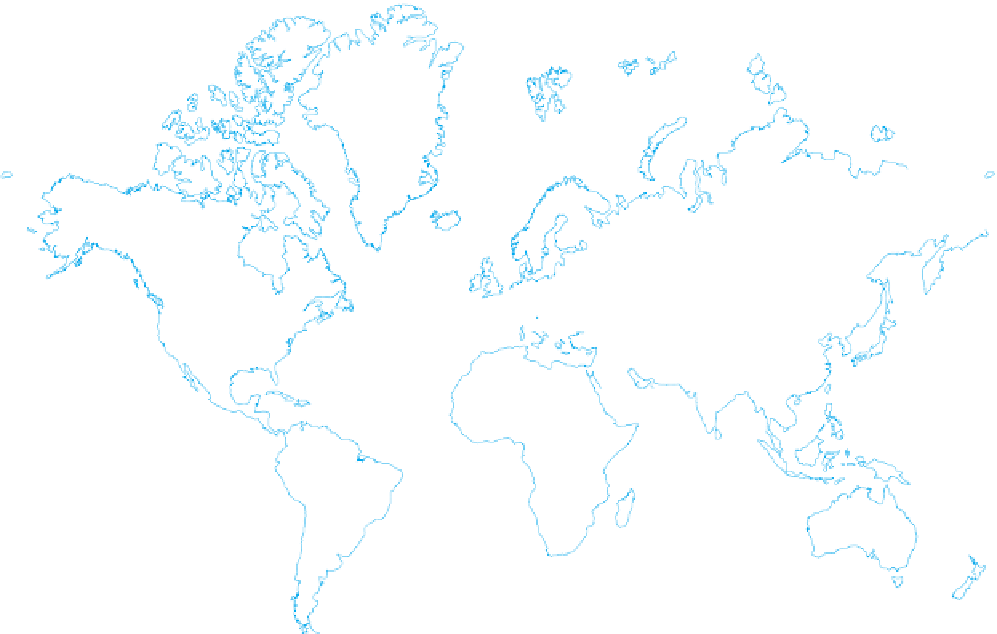Geoscience Reference
In-Depth Information
11
PM
AM
AM
AM
AM
AM
AM
AM
AM
AM
10
AM
11
AM
12
NOON
PM
PM
PM
PM
PM
PM
PM
PM
PM
10
PM
11
PM
-7
Fairbanks
Oslo
Moscow
London
Greenwich
Berlin
Montreal
Paris
Rome
Chicago
Istanbul
Beijing
New York
Seoul
Tehran
Los
Angeles
Tokyo
Shanghai
Manila
Delhi
Cairo
Honolulu
Mexico
City
Mumbai
Lagos
Nairobi
Jakarta
Lima
Sao Paulo
Johannesburg
Sydney
Buenos
Aires
180°
150° W
120° W
90° W
60° W
30° W
0°
30° E
60° E
90° E
120° E
150° E
180°
Figure 3.6 World time zones.
Earth is subdivided into 24 time zones. The International Date Line, which lies at approximately
180° E and W longitude, is the arbitrary designation used to mark the beginning of each new day.
system, time at any given place is calculated relative to how many
hours ahead or behind that particular location is relative to the
Greenwich meridian. The beginning and end of each calendar
day is the
International Date Line
, which is located at 180° lon-
gitude. If you are traveling west, for example, on a flight from
San Francisco to Sydney, Australia, you will cross the date line
and immediately move into the next day (say, from Monday to
Tuesday). Similarly, when you cross the date line while travel-
ing east (from Sydney to San Francisco), you will return to the
previous day (such as from Tuesday back to Monday).
Although the axis of Earth is the anchor around which the
daily rotation occurs, it is a very important point of reference
for another reason as well. On first consideration, you might
think that the axis is perpendicular to the plane of the ecliptic,
that is, at a 90° angle relative to the plane on which Earth orbits
the Sun. In fact, the Earth's axis is not perpendicular to this
plane but is instead tilted 23.5° from a line perpendicular to the
plane as it revolves around the Sun (Figure 3.8). Remember that
Earth maintains this degree of tilt
and
orientation with respect
to the Sun throughout the year. This geometric relationship is
important to understand because it is the reason for the seasons
that we experience, as explained in the next section.
KEY CONCEPTS TO REMEMBER
ABOUT OUR PLACE IN SPACE
1.
Earth is the third planet from the Sun.
2.
Although Earth is essentially spherical, it is not perfectly
round; in fact, it is an oblate spheroid.
3.
Earth orbits the Sun on the plane of the ecliptic in an
elliptical orbit.
4.
Earth rotates on its axis, which results in our day/night
cycle.
International Date Line
This line generally occurs at 180°
longitude, with some variations due to political boundaries,
and marks the transition from one day to another on Earth.
5.
The axis of Earth is tilted at 23.5° from a line perpendicular
to the plane of the ecliptic.


















































































































































































































































































































